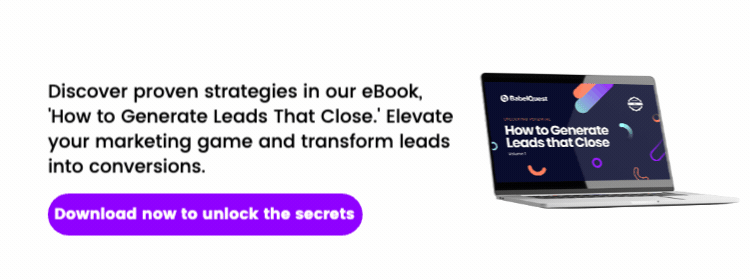Imagine you’re building a house. Without solid foundations, anything you put together will fall down fast. Set those foundations in place, however, and you have the groundwork on which to build predictable, scalable, and repeatable business growth.
By now you’ve recognised the necessity for a customer-centric strategy, and with your buyer personas in tow, you know your leads that close like the back of your hands. But how much is this reflected in your inbound marketing, and can you confidently say you’re delivering a consistent output of effective, relevant core activity each month that meets these requirements?
Before you even think about building out a specific campaign, you need to understand the five steps of inbound marketing (your ‘foundations’).
 The five steps of inbound marketing
The five steps of inbound marketing
It’s all well and good breaking down and defining the core activity that’ll drive your inbound success, but there’s something to be said for the way you carry out that activity, too. This is where inbound marketing and sales platform HubSpot’s five steps to inbound marketing come into play.
In HubSpot’s own words, "The inbound principles guide you in connecting the methodology with its execution. The inbound principles of standardise, contextualise, optimise, personalise, and empathise are designed to build upon each other, enabling you to execute the inbound methodology with excellence."
When implementing inbound marketing, think of these principles as best practices or guidelines informing the way your team carries out its activity.
You can find out more about HubSpot’s inbound principles and how to apply them in relation to your business strategy at the HubSpot Academy.
What is core inbound marketing activity?
The process of reaching, engaging with, and nurturing your clients can be broken down neatly into core inbound marketing activities. To unlock the full potential of your marketing, you should dedicate a consistent amount of time and resources towards the completion of these each month.
By sharing these core responsibilities across your business, you can be sure that no step is missed. A clear growth strategy outlines how you will achieve your goals. Better yet, by delegating activities to the teams best placed to implement them, you’re ensuring that every task is carried out by the right experts (whether yours or any third parties you’re working with).
Most importantly, you know that your inbound marketing activity is getting the time and attention it needs every month to actually work.
So what are the key elements of inbound marketing, and how long should you spend on them each month?
How long you spend on your core activity will depend on a lot of things, from the size of your business to your inbound marketing ambitions and even the proficiency of your team. But broadly speaking, we recommend you dedicate 100 hours per month to this activity:
1. Content creation [30 hours]
Quality is the name of the game and this takes time. It’s just not good enough to churn out average content and expect it to deliver. Make sure your content team sets aside enough time to properly research, create, edit, and publish engaging articles, infographics, or videos.
2. Performance management [10 hours]
Performance management is an iterative process. You might not spend long optimising a landing page, but you could expect to be doing this frequently based on what your data is telling you about the way your visitors are interacting with the page.
3. Content distribution [20 hours]
Your content isn’t going to go anywhere if you don’t distribute it intelligently. It doesn’t take long to schedule social posts or emails, especially with HubSpot, but timing, relevancy, and consideration for each platform’s audience are everything.
4. Content promotion [10 hours]
As above, but with more detailed research into where your buyer personas are spending their time online and how they engage with different platforms. We define promotion as paid distribution. Failing to put in the hours will probably lead to poor results (and wasted budget).
5. Website optimisation, SEO and keyword research [10 hours]
Keyword research can be time-heavy, even if it doesn’t take long for an expert to implement their recommendations on-page. Optimising your website technically shouldn’t be brushed to the side; your website’s health will directly impact the success of every campaign it touches.
6. Conversion paths and optimisation [10 hours]
If you want to maximise conversions from your traffic, you’re going to need to take the time to set up and optimise the relevant lead flows and forms. Don’t forget to test your iterations, either. Rushing this could lead to mistakes that interrupt lead flows and limit conversions.
7. Automation and lead scoring [10 hours]
Automation will save you time in the long term, but it needs setting up correctly first. Whether you want a simple three-step sequence or a complex nurture sequence, it’s important that you set aside time to consider and implement this vital marketing and sales alignment stage.
Related read: What is an inbound marketing agency (and why should you use one)?
How to define your core activity
You might be concerned that you can’t find 100 hours across your team of one to dedicate to the above. Equally, you might be running multiple global campaigns simultaneously, at which point 100 hours doesn’t look like very much at all.
It’s time to start thinking about core marketing activity in the context of your own business.
- Consider which activities your business is currently engaging in and which are missing
- Are there activities you are struggling to manage in-house?
- Does your team need training or upskilling in any particular areas to be able to deliver on the plan?
- Which core marketing activities can your team confidently deliver?
- Crucially, how long do you currently spend on what we would consider core marketing activities, and what is your internal marketing capacity?
What are the key elements of your inbound marketing strategy?
Some core activities might sit outside your skillset or experience and take longer as a result. Remember: there’s a whole world of consultants, agencies, and subject matter experts out there just waiting to help you out. Our entire blog is dedicated to just that, and we’re never more than a phone call away if you’d like to chat.
Whether you go it alone or are willing to seek expert support to drive campaign success, it’s important to define who is best placed to take on each task and how long they should spend on it. (The sorts of things we identify early on when Inbound Strategy Planning.)
With accountability clearly set from the beginning, you can begin working to deliver the core marketing activity that will elevate you above and beyond your competition, connect with your target buyers, and jumpstart the meaningful conversations your organisation needs to grow.
Learn much more about each of the core inbound activities in our free, 80-page ebook, ‘How to Generate Leads That Close’. Click the image below to grab your copy now.
Heading
Separated they live in Bookmarksgrove right at the coast of the famous Semantics, large language ocean and many more stuff and more more more


Tom is BabelQuest's Principal Copywriter. He has a PhD in Creative Writing from the University of Southampton and is a novelist with Sparkling Books.




.png?width=50)

.png?width=50)
.png?width=50)


































